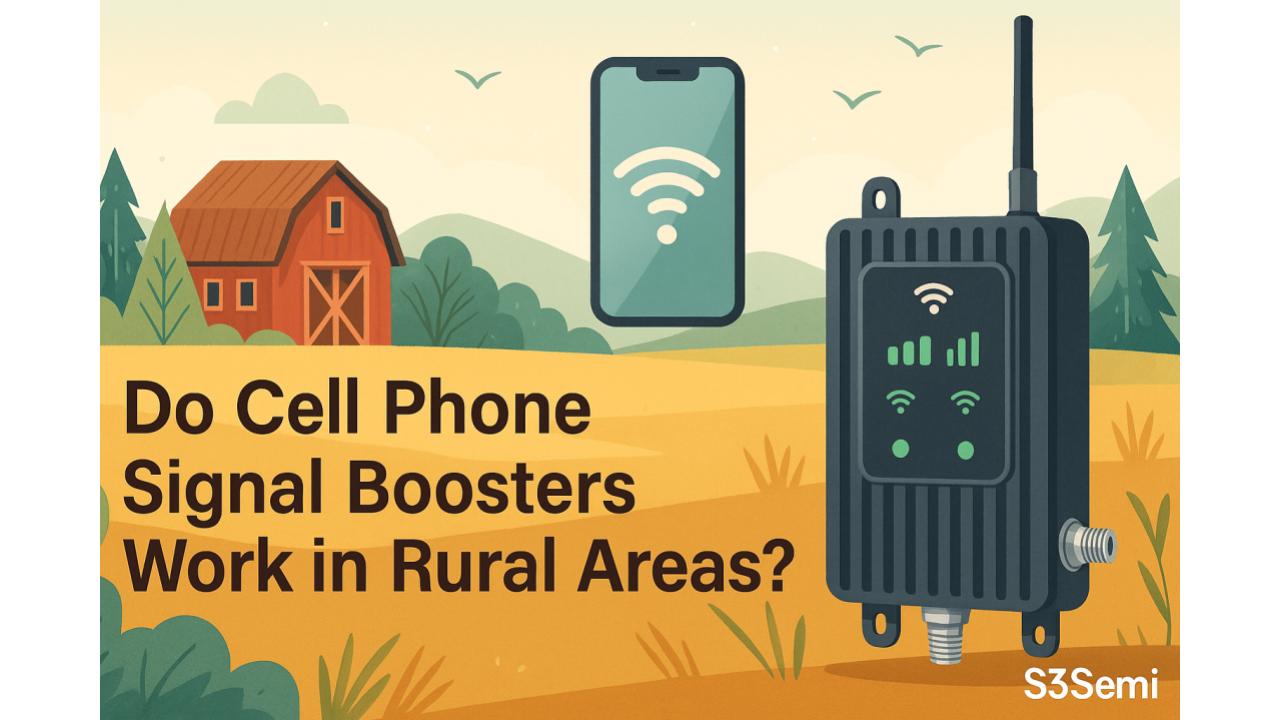📶 When you’re living or traveling in a rural area, a common frustration is weak or unreliable cell signal. Whether you’re trying to make a call, send a text, or stream a video, poor reception can be more than just annoying—it can disrupt your work, safety, and peace of mind. This is where cell phone signal boosters come in. But do they really work in rural areas?
Let’s break it down.
🏞️ Why Cell Signal Is Weak in Rural Areas
Rural areas often suffer from poor coverage due to:
- Distance from cell towers – Signals weaken over miles of open land.
- Terrain – Hills, mountains, and dense forests can block signals.
- Sparse tower infrastructure – Fewer towers serve larger areas.
- Building materials – Even when you’re indoors, thick walls and metal roofs can interfere with reception.
📡 What Is a Cell Phone Signal Booster?
A cell phone signal booster, also called a repeater or amplifier, is a device that captures an existing weak signal, amplifies it, and rebroadcasts it inside your home, vehicle, or RV.
It consists of three main components:
- Outdoor antenna – Captures the weak signal.
- Booster unit – Amplifies the signal.
- Indoor antenna – Repeats the stronger signal inside.
✅ Do Signal Boosters Work in Rural Areas?
Yes, they do—but with one important condition:
There must be some existing signal to boost.
If your phone shows even one bar (or sometimes just intermittent service), a booster can often make a dramatic difference.
However, if there is no signal at all, even the best booster won’t be able to help—you need something to amplify in the first place.
🔍 Key Considerations for Rural Use
Here’s what to look for when choosing a booster for rural areas:
High Gain Capability
Look for boosters that offer 65–72 dB of gain. More gain means better amplification of weak signals.
Directional Outdoor Antenna
A Yagi or panel antenna that you can aim directly at the nearest cell tower works best in rural settings. These antennas are much more powerful than omnidirectional ones.
Longer Range Coverage
Choose models that can cover larger spaces (e.g., 2,000 to 5,000+ sq. ft.) if you need signal across a whole home or cabin.
Multi-Carrier Support
Most boosters support all major North American carriers (AT&T, Verizon, T-Mobile, etc.)—but double-check compatibility for your carrier and bands.
Weatherproof for Outdoor Use
For RVs or installations in extreme conditions, look for weather-sealed, ruggedized options.
💡 Pro Tip: Use a Signal Finder App
Apps like Network Cell Info, OpenSignal, or your phone’s field test mode can help you locate the direction and strength of the nearest tower for better antenna placement.
🛠️ Top Signal Boosters for Rural Areas
Here are a few tried-and-true options:
| Model | Coverage | Best For | Price |
|---|---|---|---|
| weBoost Home MultiRoom | Up to 5,000 sq. ft. | Whole homes | $$$ |
| SureCall Fusion4Home | Up to 3,000 sq. ft. | Cabins & cottages | $$ |
| HiBoost 15K Smart Link | Up to 7,500 sq. ft. | Larger rural homes | $$$ |
| weBoost Drive Reach | Vehicles in remote areas | Cars, RVs, trucks | $$ |
🌾 Final Thoughts
Cell phone signal boosters can absolutely work in rural areas, and for many people, they’re a game-changer. The key is to start with at least some signal and select a booster that’s powerful, directional, and optimized for your needs.
Whether you’re calling from a cozy cabin or a cross-country RV, staying connected is possible—even far from the city lights.




